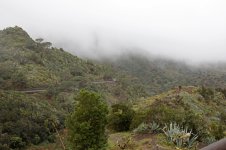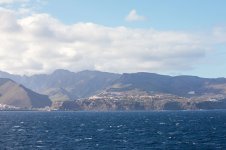
Now that I've got your attention let me elucidate! 3
I'm in the throes of planning a trip for this time next year to tie in with my birthday and a dose of winter sun for my long-suffering wife!
I have read a lot of the excellent trip reports on here but would like to clarify a few things.
My main targets would be the six endemics plus Houbara Bustard, CCC, Barbary Partridge and Lesser Short-toed Lark. Having never birded anywhere this part of the world there would be plenty of ancillary targets such as African Blue Tit, Cory's Shearwater etc.
I am thinking three or four days each on Tenerife and Fuertaventura, hiring a car on both islands. Does that sound feasible (I wouldn't want to be rushing around too much)?
I understand it would be better to stay in the north of Tenerife and possibly the Jandia area on FTV? Any suggestions for locations are welcome - we prefer quiet, small, perhaps family-run establishments over big, modern hotels.
Is the transfer from Tenerife to FTV (or vice versa) best by internal flight or is ferry a consideration?
Is the ferry trip to La Gomera worthwhile at this time of year? If so does one simply turn around and come back or is it worth exploring (I think I read that you can take cars hired from CI Car across)?
Guidebook-wise I am thinking Gosney and both Crossbill volumes, anything else I should be looking at?
Doubtless I will have plenty of other questions as thinks progress but that will do for now!
Thanks in advance,
Chris
I'm in the throes of planning a trip for this time next year to tie in with my birthday and a dose of winter sun for my long-suffering wife!
I have read a lot of the excellent trip reports on here but would like to clarify a few things.
My main targets would be the six endemics plus Houbara Bustard, CCC, Barbary Partridge and Lesser Short-toed Lark. Having never birded anywhere this part of the world there would be plenty of ancillary targets such as African Blue Tit, Cory's Shearwater etc.
I am thinking three or four days each on Tenerife and Fuertaventura, hiring a car on both islands. Does that sound feasible (I wouldn't want to be rushing around too much)?
I understand it would be better to stay in the north of Tenerife and possibly the Jandia area on FTV? Any suggestions for locations are welcome - we prefer quiet, small, perhaps family-run establishments over big, modern hotels.
Is the transfer from Tenerife to FTV (or vice versa) best by internal flight or is ferry a consideration?
Is the ferry trip to La Gomera worthwhile at this time of year? If so does one simply turn around and come back or is it worth exploring (I think I read that you can take cars hired from CI Car across)?
Guidebook-wise I am thinking Gosney and both Crossbill volumes, anything else I should be looking at?
Doubtless I will have plenty of other questions as thinks progress but that will do for now!
Thanks in advance,
Chris






